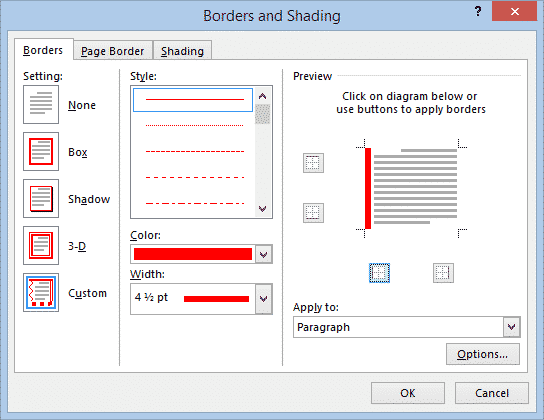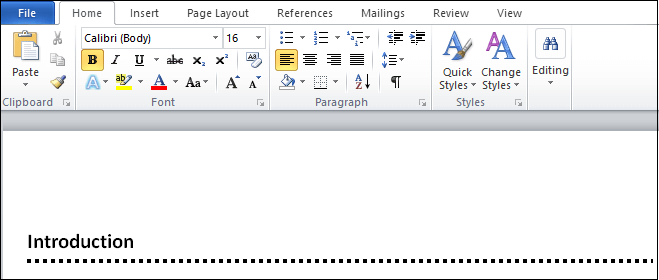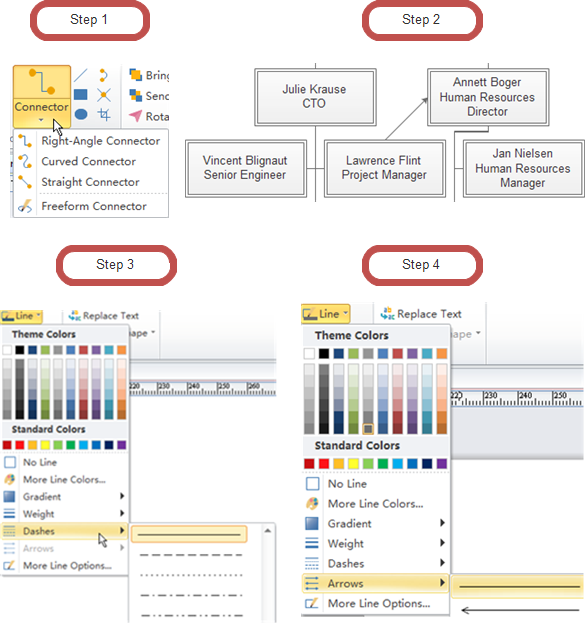Published on Mar 26, 2018DiyaBati IT Solutions Private Limited.
In Western musical notation, a dotted note is a note with a small dot written after it. In modern practice, the first dot increases the duration of the basic note by half (the original note with an extra beam) of its original value. This means that a dotted note is equivalent to writing the basic note tied to a note of half the value – for instance, a dotted half note is equivalent to a half note tied to a quarter note. Subsequent dots add progressively halved value, as shown in the example to the right.[1][a] Though theoretically possible, a note with more than three dots is highly uncommon;[2] only quadruple dots have been attested.[3] If the original note is considered as being of length 1, then a quintuple dot would only be 1/32 longer than the quadruple dotted note.[b] The difficulty may be seen by comparing dotted notation to tied notation: a quarter note () is equivalent to 2 tied eighth notes (), a dotted quarter = 3 tied eighth notes, double dotted = 7 tied sixteenth notes (), triple dotted = 15 tied thirty-second notes (), and quadruple dotted = 31 tied sixty-fourth notes ().[c] Although shorter notes do occur, sixty-fourth notes are considered the shortest practical duration found in musical notation.[4]
- NOTE: To display the leading dots (or Dotted lines) again, just follow the same procedure above and when you reach the last step, select option two. You can also change the style of leading dots you like by considering option 3 or 4. These is the easiest way to add and remove leading dots from Table of Content in Microsoft Word.
- Follow these steps to add a dotted line to an organization chart. Step 1: Switch to Home tab, click Connector and then choose a connector style. Step 2: Draw a connector between the two shapes that have a dotted line reporting relationship. Step 3: Click Line to show the dropdown menu. Move your cursor down and rest it above Dashes. Choose your desired style of the dotted line. Step 4: Choose an.
- Handwriting practice paper dotted notebook for kids is the first step towards learning. Trace the letters and practice handwriting in this awesome and crazy lined paper book with dotted grid for practicing handwriting. Get your kids this notebook and let them write. Handy 8.5x11 size.
| Undotted | 1 dot | 2 dots | 3 dots | 4 dots | |
|---|---|---|---|---|---|
| Lengthens | NA () | ||||
| Result |
The use of a dot for augmentation of a note dates back at least to the 10th century, although the exact amount of augmentation is disputed; see Neume.
A rhythm using longer notes alternating with shorter notes (whether notated with dots or not) is sometimes called a dotted rhythm. Historical examples of music performance styles using dotted rhythms include notes inégales and swing. The precise performance of dotted rhythms can be a complex issue. Even in notation that includes dots, their performed values may be longer than the dot mathematically indicates, a practice known as over-dotting.[5]
Notation[edit]
If the note to be dotted is on a space, the dot also goes on the space, while if the note is on a line, the dot goes on the space above (this also goes for notes on ledger lines).[6]
The placement of dots gets more complicated for adjacent-note chords and for lower voices, as shown below.
The dots on dotted notes, which are located to the right of the note, should not be confused with the dots for staccatoarticulation, which are located above or below the note.
Theoretically, any note value can be dotted, as can rests of any value. If the rest is in its normal position, dots are always placed in third staff space from the bottom, as shown in the example below.[7]
Dots can be used across barlines, such as in H. C. Robbins Landon's edition of Joseph Haydn's Symphony No. 70 in D major, but most writers today regard this usage as obsolete and recommend using a tie across the barline instead.[8]
Double dotting[edit]
A fragment of the second movement of Joseph Haydn's String Quartet, Op. 74, No. 2, a theme and variations. The first note is double-dotted. Haydn's theme was adapted for piano by an unknown composer:
A double-dotted note is a note with two small dots written after it. Its duration is 13⁄4 times its basic note value. The double-dotted note is used less frequently than the dotted note. Typically, as in the example to the right, it is followed by a note whose duration is one-quarter the length of the basic note value, completing the next higher note value. Before the mid-18th century, double dots were not used. Until then, in some circumstances, single dots could mean double dots.[9]
In a French overture (and sometimes other Baroque music), notes written as dotted notes are often interpreted to mean double-dotted notes,[10] and the following note is commensurately shortened; see Historically informed performance.
Triple dotting[edit]
(1 dot)
(2 dots)
(3 dots)

:max_bytes(150000):strip_icc()/ClipartPageBorders-5b0847440e23d90036138864.jpg)

A triple-dotted note is a note with three dots written after it; its duration is 17⁄8 times its basic note value. Use of a triple-dotted note value is not common in the Baroque and Classical periods, but quite common in the music of Richard Wagner and Anton Bruckner, especially in their brass parts.[citation needed]
An example of the use of double- and triple-dotted notes is in Frédéric Chopin's Prelude in G major for piano, Op. 28, No. 3. The piece, in common time (4
4), contains running semiquavers (sixteenth notes) in the left hand. Several times during the piece Chopin asks for the right hand to play a triple-dotted minim (half note), lasting 15 semiquavers, simultaneously with the first left-hand semiquaver, then one semiquaver simultaneously with the 16th left-hand semiquaver.
See also[edit]
Notes[edit]
- ^If the base note is 1, then the xth dot adds the length (1/2, 1/4, 1/8, ..).
- ^Tempos vary from ≤24 beats per minute to ≥200 bpm; at a slow Larghetto tempo of quarter note = 60 (one quarter note per second; 60 bpm), the length of a quintuple dotted note is 0.03125 seconds longer than a quadruple dotted note and presumably below the JND for musical duration and too fast to allow proper counting and accuracy.
- ^In practice a dotted quarter is notated as a quarter note tied to an eighth note, a double dotted quarter is a quarter note tied to an eighth note tied to a sixteenth note, etc.
References[edit]
- ^Gardner Read, Music Notation: A Manual of Modern Practice 2nd Edition. Boston: Allyn & Bacon, Inc. (1969): 114, Example 8-11; 116, Example 8-18; 117, Example 8-20.
- ^Bussler, Ludwig (1890). Elements of Notation and Harmony, p. 14. 2010 edition: ISBN1-152-45236-3.
- ^'Extremes of Conventional Music Notation'. indiana.edu.
- ^Morehen, John. 2001. 'Hemidemisemiquaver'. The New Grove Dictionary of Music and Musicians, second edition, edited by Stanley Sadie and John Tyrrell. London: Macmillan Publishers.
- ^Hefling, Stephen E. (2001). 'Dotted rhythms'. In Root, Deane L. (ed.). The New Grove Dictionary of Music and Musicians. Oxford University Press.
- ^Glen Rosencrans, Music Notation Primer. New York: Passantino (1979): 29
- ^Read (1969): 119; 120, Example 8-28. The author points out the obvious fact 'that it is impossible to tie rests.'
- ^Read (1969): 117–118. 'Ranging from Renaissance madrigals to the keyboard works of Johannes Brahms, one often finds such a notation as the one at the left below.' (The next page shows an example labeled 'older notation' of two measures of music in 4
4 of which the second measure contains, in order: an augmentation dot, a quarter note and a half note.) - ^Taylor, Eric (2011). The AB Guide to Music Theory Part I. ABRSM. p. 18. ISBN978-1-85472-446-5.
- ^Adam Carse, 18th Century Symphonies: A Short History of the Symphony in the 18th Century. London: Augener Ltd. (1951): 28. 'Contemporary theorists made it clear that the dotted note should be sustained beyond its actual value (the double dot was not then in use), and that the short note or notes should be played as quickly as possible.'
External links[edit]
- Media related to Dotted notes at Wikimedia Commons
- Dotted Notes Explained – A simple explanation of dotted notes
Set up auto-correction
Turn on auto-correction on your device:
- On iPhone or iPad, open a document in Pages, Numbers, or Keynote, tap the More button , tap Settings, then tap Auto-Correction.
- On Mac, in Pages, Numbers, or Keynote choose [app name] > Preferences from the menu bar, then choose Auto-Correction.
Use the auto-correction settings to customize how Pages, Numbers, and Keynote handle spelling and formatting by selecting and deselecting the available options. Import passwords to 1password. These options include:
How To Add The Dotted Line In Word
- Detecting lists
- Detecting web and email links
- Detecting phone links
- Applying link styles
- Applying superscript to number suffixes
- Formatting fractions
- Using Smart Quotes, which replace single and double quotes with curly quotes or your chosen quote style (Mac only)
If you are using iCloud Keychain, each app’s settings are shared across all your Apple products signed into your iCloud account.

Some options might also be available in other menus within iWork. If you change a setting in another menu, it changes your auto-correction settings too. Some iWork settings are similar to other settings on your iPhone, iPad, or Mac. In most cases, the settings you choose in Pages, Numbers, or Keynote override the system setting on your device.
Set up custom text replacements
With text replacement, you can use shortcuts to replace longer phrases. When you type the shortcut in your document, the phrase automatically replaces it.
In the auto-correction settings for Pages, Numbers, and Keynote, you can set up text replacement specifically for use within each app.
Set up custom text replacements on iPhone or iPad
- With a document open, tap the More button .
- Tap Settings.
- Tap Auto-Correction.
- Make sure Text Replacement is turned on, then tap Replacements List.
- Tap the Add button .
- For Phrase, enter what you want the app to change the text to (for example, '©').
- For Shortcut, enter the text you want to use to prompt the replacement (for example, '(c)').
If you used this example, every time you type '(c)' in Pages, Numbers, or Keynote, the app changes it to '©.'
Set up custom text replacements on Mac
- Open the auto-correction settings.
- Under Replacement, make sure 'Symbol and text substitution' is selected, then click the add button .
- Under Replace, enter the text you want to use to prompt the replacement (for example, '(c)').
- Under With, enter what you want the app to change the text to (for example, '©').
If you used this example, every time you type '(c)' in Pages, Numbers, or Keynote, the app changes it to '©.'
Undo text replacement
If Pages, Numbers, or Keynote replaces the text, and you want to restore it to the way you typed it in, press Command-Z on your keyboard or tap the Undo button .
Use auto-correction with other languages
Auto-correction is available for languages that your Mac is set up to spell check. To see these languages, go to System Preferences > Keyboard > Text and click the Spelling pop-up menu. Click 'Set Up' to learn how to add spelling dictionaries for additional languages. On iPhone or iPad, auto-correction is not available for all languages.
Add words to the spelling dictionary
When Pages, Numbers, or Keynote detects a word it doesn’t recognize, it underlines the word with a dotted red line. You can add the word to the dictionary on your device used by iWork and other apps so that it recognizes the word and includes it in spell check:
How To Add Dotted Line In Word Document
- On iPad or iPhone, tap the underlined word, then tap Learn Spelling (you may need to tap Replace first).
- On Mac, Control-click the word, then choose Learn Spelling.
How To Add Dotted Line In Word Org Chart
In Pages, Numbers, or Keynote on Mac, you can also choose Ignore Spelling if you no longer want that app to mark this word as misspelled. To add, edit, or remove the words in your iWork app's Ignored Words list, choose Pages > Preferences, choose Auto-Correction, then click Ignored Words. Click the add button (+) or the remove button (-) to add or remove words. Or click on a word to edit its spelling.

